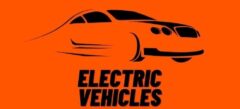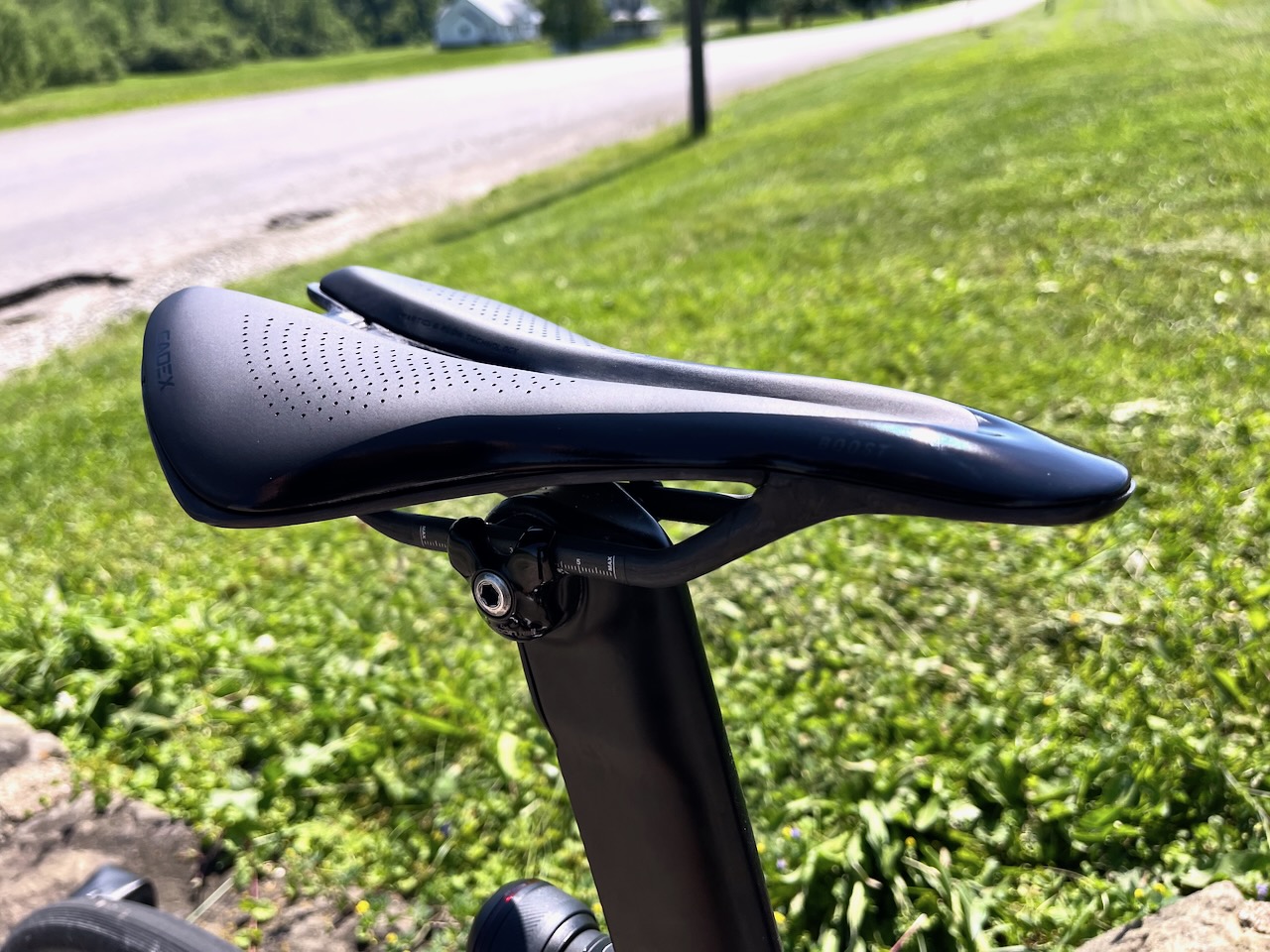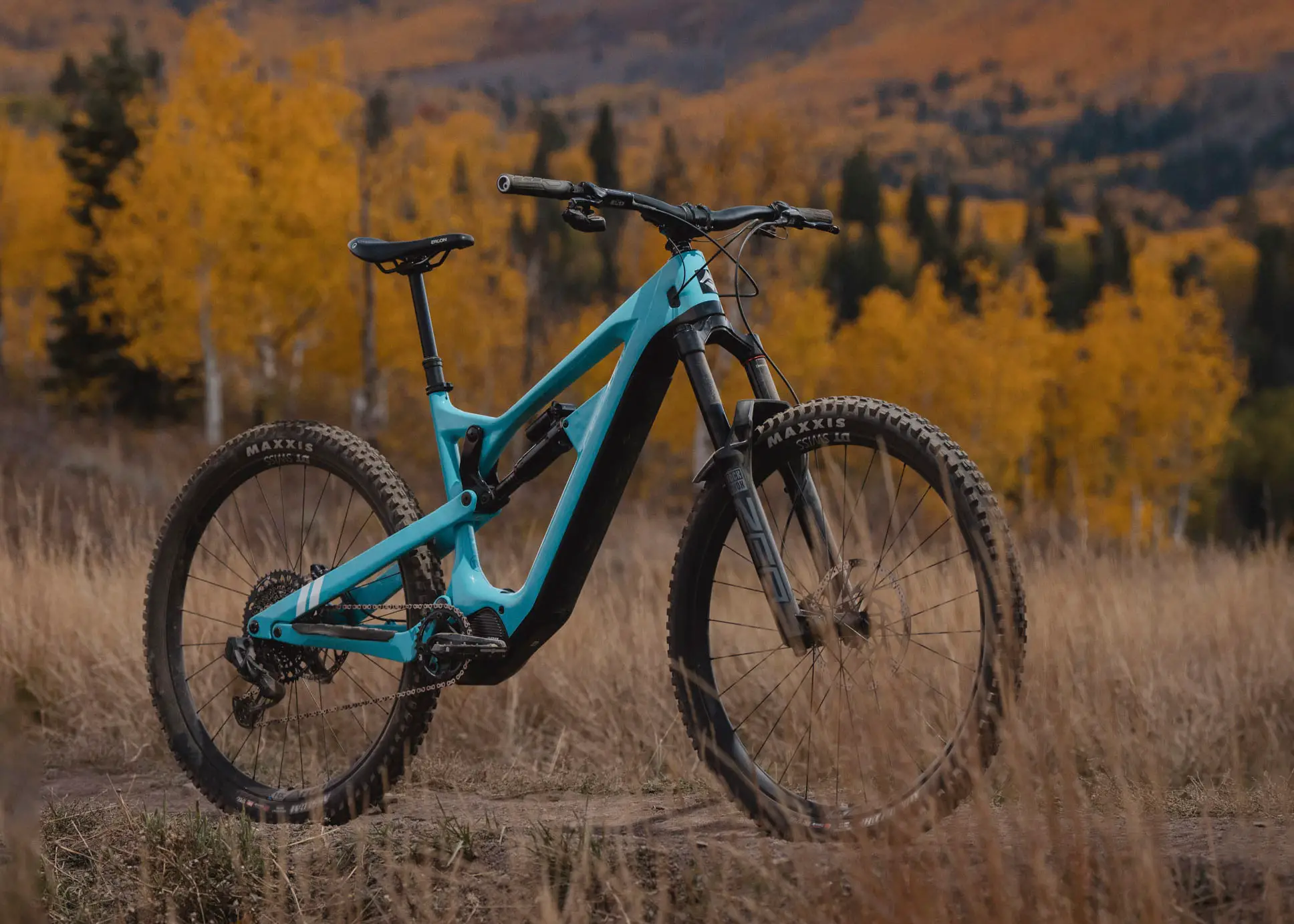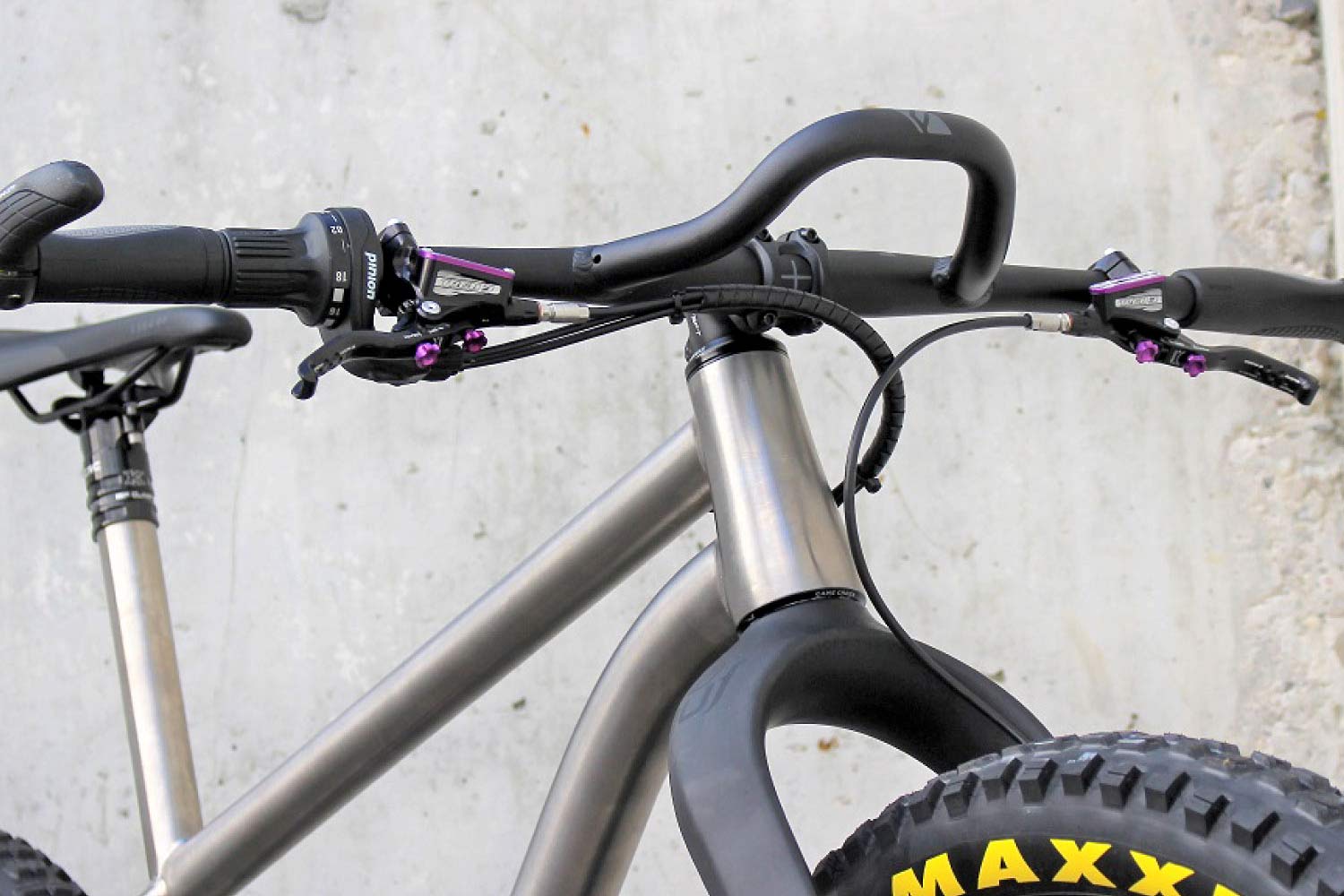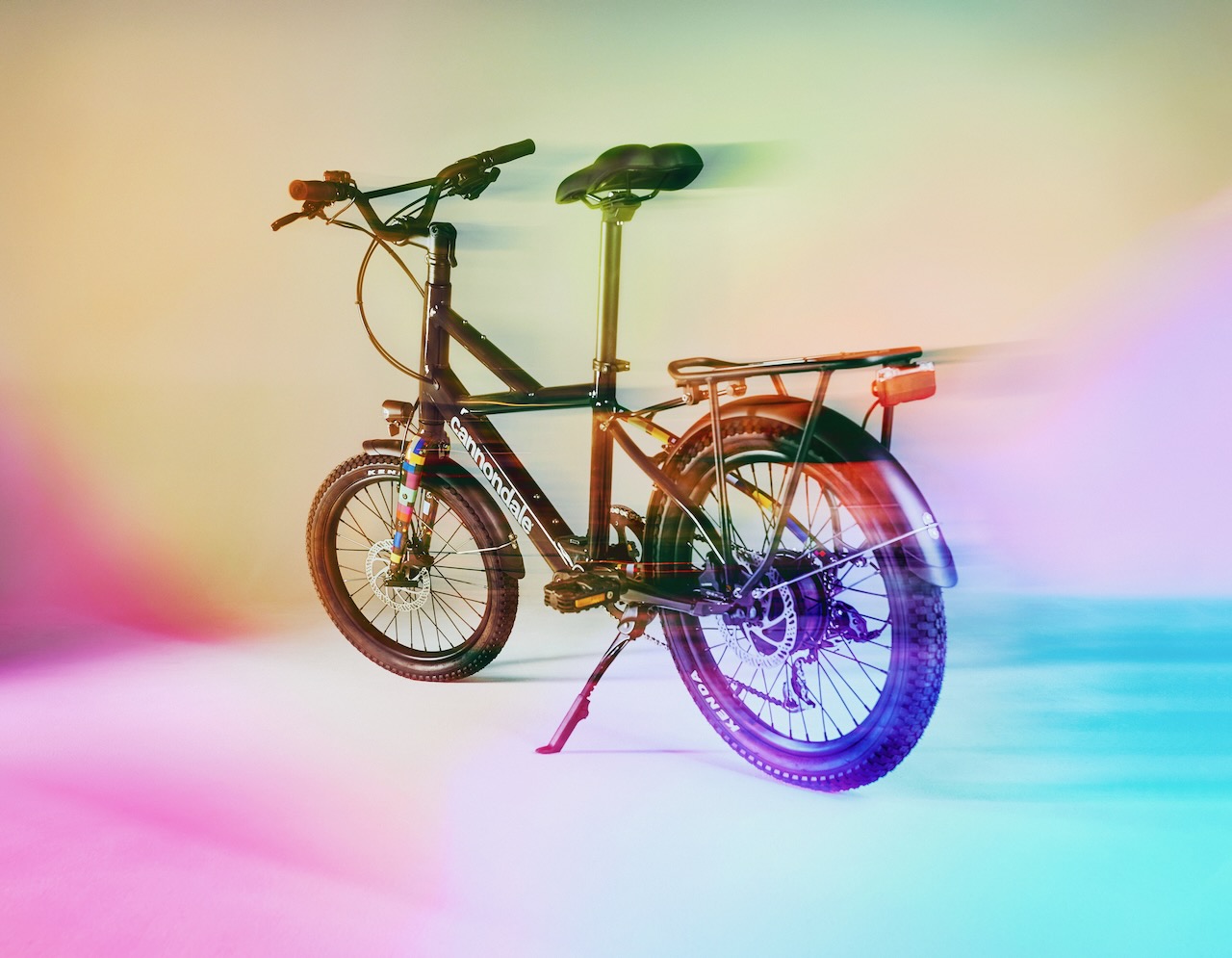[ad_1]
In the quest for the pinnacle of performance and product, CADEX allocated some of its wheel and handlebar construction to create a new saddle — a first for the brand.
Those familiar know that CADEX isn’t just another OEM component from its parent company Giant Bicycles. Giant relaunched the CADEX brand in 2019 at the Tour de France. Once the name of Giants’ first mass-produced carbon bike frame, CADEX is now the top-tier component line for professional-level performance. Though you’ll see CADEX wheels on World Tour squad Team Bike Exchange Jayco and ambassadors like The Black Foxes, this component manufacturer looks beyond the Giant brand.
The CADEX aesthetic is matte carbon, with a monochromatic graphics package and a little twist on the traditional form. The Boost saddle from CADEX toes the same line, with a “match any bike” look, including the signature matte carbon fiber. The twist on the traditional? That would be how/where the carbon rails attach to the full carbon shell and how it cradles the rider.
CADEX Boost Design
Crafting the Boost saddle base and rails out of carbon fiber gives CADEX the freedom to explore new shapes. The base and rails of the saddle attach farther back on the saddle base, giving a hammock feel. The placement relieves pressure points by positioning the saddle rail connections to the base in an area that’s not a contact point for riders. The full-carbon base fuzed to the rails eliminates the overlapping joint area commonly found on saddles and sheds weight. The full carbon shell/rails help deaden road vibrations and give the saddle a bit of free movement under the rider.
The foam is another unique bit on this saddle. It’s an EVA foam enhanced by an ETPU (expanded thermoplastic polyurethane) used to mute road vibrations. This new foam eases pressure points and distributes posterior pressure across a broader contact area for a firmer, more comfortable ride. The Boost design team opted for two types of padding, creating “free-floating ETPU particles .” CADEX claims this material is the most elastic available on the market. It can spring back after extended and continuous loading — it’s been excellent in every condition.
CADEX Boost Saddle Key Features
- Rail Material Carbon with Advanced Forged Composite Technology
- Rail Size 9mm, Integrated Rail Design
- Shell Advanced Forged Composite Technology
- Cover Microfiber
- Padding EVA+ETPU Particle Flow
- Size: Width: 149mm/ Length: 246mm
- Stack: 44mm
- Weight 138g *actual
- Price: $315.00
Setup and dial in
I’m a fan of the short nose saddle, the Specialized Power being my go-to for years. My setup with a short nose saddle starts like any other; transfer all measurements, adjust saddle tilt — step on the bike. What I find the most difficult to predict is the tilt. I use a Dewalt level with an adjustable level to set up my saddles at the exact tilt I like (usually -2° or -3°).
The 9mm rails of the CADEX Boost played nicely with my Specialized Seatpost, but if you have 7mm rounded rail or Trek/Bontrager style Seatpost ears, you’ll need to swap out. The saddle has a nice amount of fore and aft adjustability. The dimensions are slightly different from the S-Works Power saddle I used previously. The CADEX Boost is slightly longer (246mm vs. 240mm), and the Boost is slightly higher (44mm vs. 41.5mm). The width (only width available, might I add) was right on the money at 149mm. I usually ride a 144-145mm saddle, but the shape of the Boost works very well with the sizing.
The CADEX Boost saddle is a bit of a head-scratcher. I’m used to many (many) minor adjustments to get the fit right. From the initial setup, the saddle was very comfortable. I almost didn’t adjust; I was thinking, “slam dunk from the first attempt?” but that’s not me; I always have to tinker. With a slight tweak, moving the saddle back 1mm and nose down from 2° to 3°, the saddle was comfortable and locked in, like a hip hinge. The nose has a very slight amount of padding and looks painful, but it is very comfortable. It is one of the most comfortable road saddles that I’ve ridden.
How does it ride?
From my first ride to my last, this saddle was comfortable; it went from great, to double century worthy after a slight adjustment after my initial ride. The carbon hammock design soaks up the road chatter much more than I thought it would. The carbon rails and flat-ish transition in the rear of the saddle allow it to flex and move slightly with the rider. It reminded me of the first time I rode the Fabric Alm Ultimate saddle, but the short nose and wide rear fit me much better.
The “free-floating ETPU particles” seem to do their job because I couldn’t feel any hot spots or lapse in the foam integrity. After many miles of rain, hot summer suffer-fests, and endless Zwifting, the foam has shown zero signs of fatigue.
Final thoughts
If you’re an upright kind of rider who sits directly on your sit bones, I will caution you in advance on the Boost. The shape and style seem to fit an aggressive drop bar setup. For those that like a locked and loaded saddle feel — the Boost is right up there with the best I can recall.
The $315 price is premium, much like the performance of the saddle. I would love to see a more approachable version of the CADEX Boost, but I’m not sure if alloy rails would translate into such a fantastic ride.
If the price puts you off a bit, note that, like the CADEX wheels, bars, and other offerings, the Boost saddle comes with the CADEX Composite Confidence. If you crash, damage, or whatever in the first 2-year of riding the product, CADEX will replace or repair it.
I highly recommend the CADEX Boost saddle for anyone who rides/races in an aggressive position and likes everything on their ride to be top-notch.
[ad_2]
Source link
